VIEQUES, Puerto Rico ― As the sun began to set on this small isolated island off Puerto Rico’s eastern coast, Sandra Medina de Jesús lay quietly on a hospital stretcher in her house. The 42-year-old mother, bedridden because of an ulcer in her tailbone, had just returned from one of the three 11-hour journeys she makes weekly to receive dialysis on the main island.
“Today was one of my low days,” she told HuffPost between labored breaths. “I was feeling very unmotivated, very down. I didn’t want to go but I knew that I had to go.”
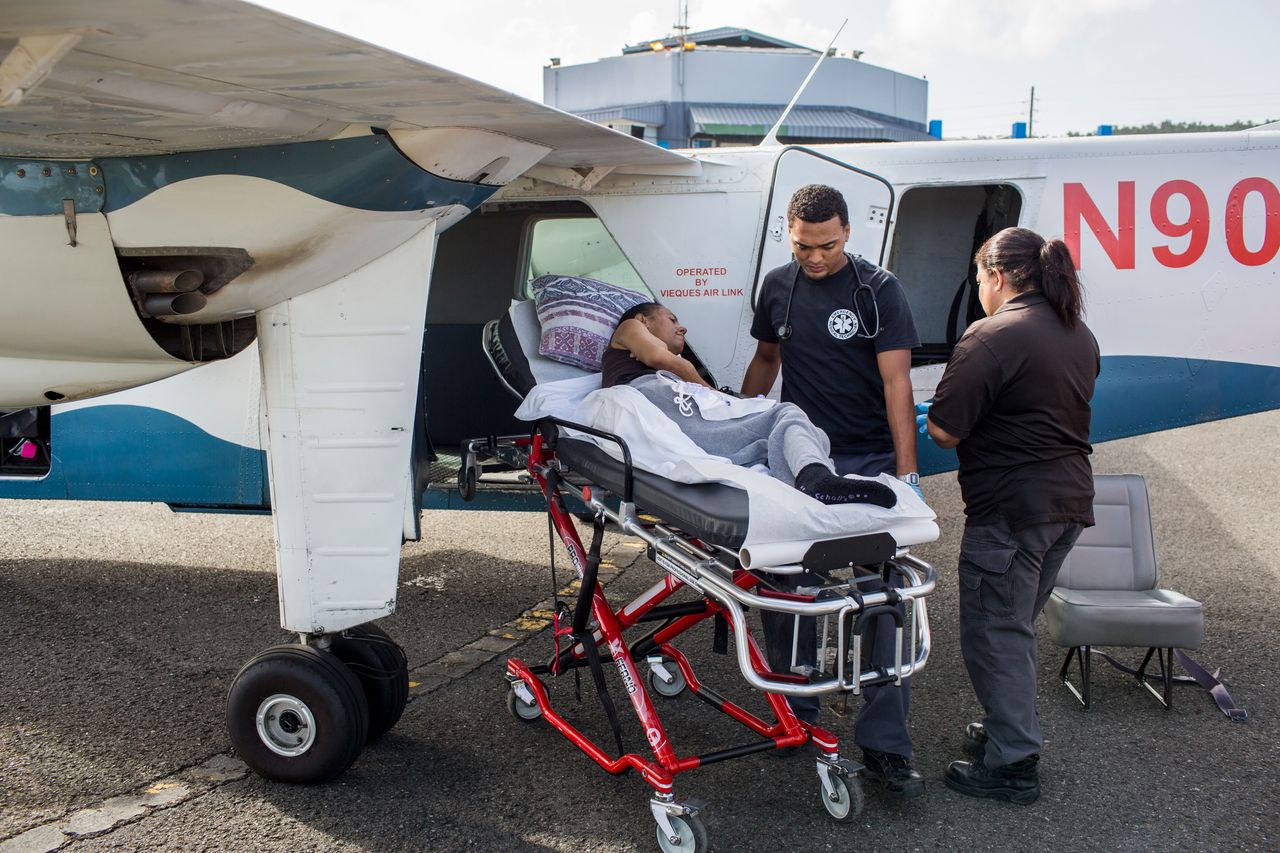
Shortly after Hurricane Maria ravaged the island in September 2017, Medina de Jesús began to develop complications from the diabetes she’d lived with for much of her life. Ultimately, she lost the bottom half of her left leg and began to suffer from chronic kidney failure.
“This fight hasn’t been easy,” said Medina de Jesús, whose colorful personality and wit earned her the nickname ‘Lady Gaga’ among her friends. “I’ve fallen many times, but my son and my husband give me the strength to keep going.”
Dialysis, a treatment for kidney failure, removes toxic substances and waste produced by the metabolic system from patients’ bodies. The hemodialysis machine that filters patients’ blood and returns it to them requires a consistent power supply, a water treatment plant, several gallons of potable water and trained personnel, among other things. Without dialysis treatments, patients like Medina de Jesús would die.
“If a patient skips a treatment, these substances will build up and cause harm,” Dr. José Ayala, a nephrologist in Puerto Rico, told HuffPost.
For the 10 dialysis patients in Vieques, including Medina de Jesús, receiving treatment on their home island became impossible after Maria. The dialysis center at the nearby Susana Centeno Hospital, known as the Diagnostic and Treatment Center, closed after parts of the hospital building suffered damage in the storm.

Consequently, patients on Vieques, many of them fragile, have to travel more than 25 miles by land and air to the Fresenius Kidney Care Center in Humacao, Puerto Rico for treatment.
In the past year, Puerto Rico’s Department of Health has repeatedly promised Vieques patients a temporary solution in the form of a mobile dialysis clinic ― but it has yet to materialize. Meanwhile, a permanent solution is nowhere in sight as politicians and government agencies pawn off responsibility for rehabilitating or replacing Vieques’ hospital.
Five patients have died during this monthslong wait for local dialysis treatment, according to the nonprofit Renal Council of Puerto Rico. Though their deaths were not directly related to kidney failure, advocates say the grueling journey to get life-saving dialysis treatment deteriorates patients’ health and complicates their other chronic conditions, like hypertension, diabetes and cancer.

Dialysis treatment is usually done three days a week ― for Medina de Jesús, it’s every Tuesday, Thursday and Saturday. When HuffPost visited, Medina de Jesús and her husband had woken up before sunrise so he could bathe her, dress her and pack her bag in time for an ambulance to pick her up at 7:30 a.m.
The ambulance was 30 minutes late and broke down, which meant she had to wait for a second ambulance to finish her transport to the airport. Once there, Medina de Jesús waited as airport staff took seats out of a small eight-seat aircraft to make room for her stretcher.
The flight to the mainland is less than 10 minutes long, but Medina de Jesús and her sister ― who usually accompanies her ― say it can be nerve-wracking.
“A few days ago, my sister and I had a big scare,” Medina de Jesús said. “The plane dropped a lot, almost like it was going to crash, and I looked at her and grabbed her and said: ‘Oh my God, we’re both going to die here.’”
Typically, after the plane arrives at the José Aponte de la Torre Airport in Ceiba, Medina de Jesús is again transferred to an ambulance and driven 30 minutes to the dialysis center in the Humacao municipality. If all goes well, she arrives just before 9:30 a.m. and is immediately wheeled in for her nearly four-hour treatment.
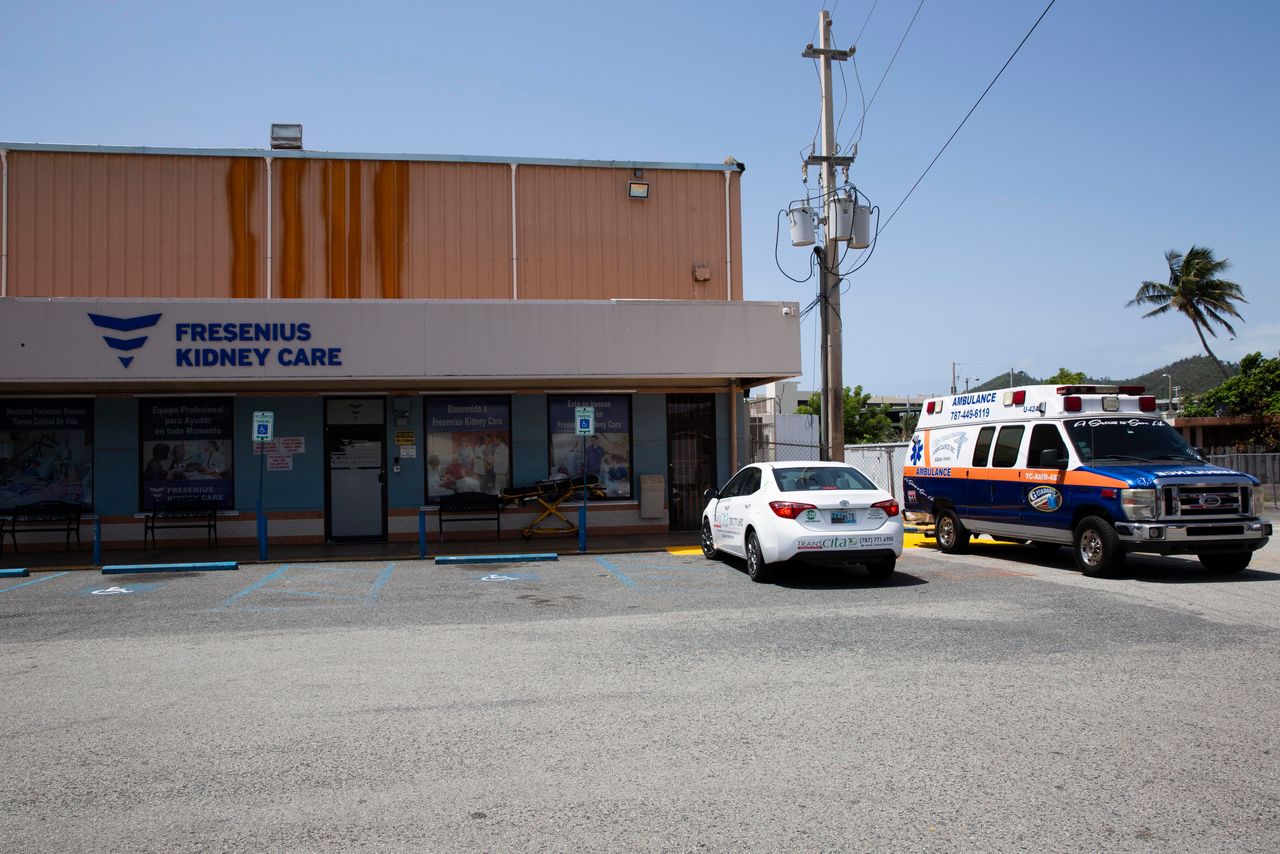
Inside the icy dialysis center, about two dozen mauve chairs are lined up in rows next to their corresponding hemodialysis machines. Amid the beeping of the machines, you can hear the heavy groans of patients suffering from pain.
Some patients try to sleep during treatment, but Leyla Rivera Acosta prefers to watch the telenovela “Rubí” on her phone.
After she’s disconnected, the 45-year-old Vieques patient sits on a bench outside the Fresenius Kidney Care Center. She shakes her leg, body tense as she waits for the van that will transfer her and others back to the Ceiba airport to finish the day-long journey. It will still be almost four hours before she arrives home.
“I’m tired,” Rivera Acosta told HuffPost with a sigh. “I can’t wait to get home. This isn’t easy, to be traveling like this three times a week ― and I’m young. I still have my strength, but this weakens you little by little.”
She had a slight headache but insisted it was manageable compared to other days. Despite being one of the younger and more stable dialysis patients from Vieques, Rivera Acosta said she sometimes comes out of treatment feeling very sick. The dialysis process can bring about uncomfortable symptoms, including low blood pressure, nausea, vomiting and muscle cramping.
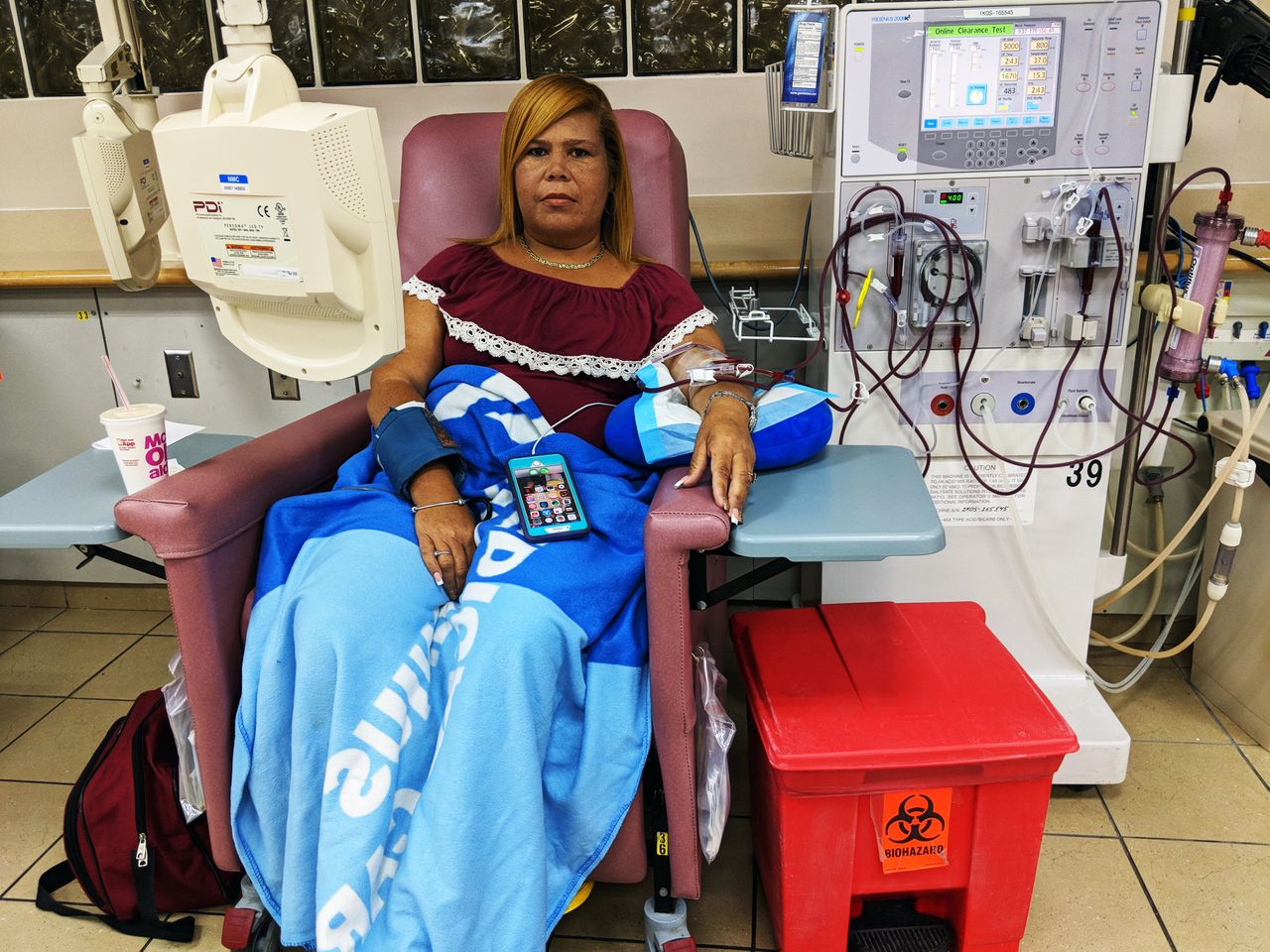
“It’s a sensation that makes you feel like dying,” said Rivera Acosta, who has needed dialysis treatment since her hypertension caused her kidneys to fail five years ago. The “cramps start at the stomach and then keep going up and then go down towards my thighs, my legs, it’s horrible. I’m in tears.”
“There are days when I’ve gotten home and I can’t help my kids,” the mother of two added. “I can’t even take a shower, I just take off my clothes and lie down because I feel so terrible I can’t do anything.”
Like Medina de Jesús, Rivera Acosta has been traveling to the main island for treatment every Tuesday, Thursday and Saturday for more than a year now ― which means she’s been missing two days of work per week at Vieques’ Municipal Revenue Collection Center.
“Establishing a dialysis unit in an emergency situation like this should not take this much time.”
- Dr. José Ayala, a nephrologist in Puerto Rico
Rivera Acosta said she’s only been able to cash in a full-time paycheck thanks to her co-workers, who’ve gifted her their sick and vacations days. The heavy travel schedule is also affecting her ability to tend to her children, particularly her 13-year-old son Jouseph, who has autism.
“When the treatment was in Vieques, it was a lot easier because I could keep my normal daily routine,” she said. “I woke up, took care of my kids, went to work, and if I had anything to do, I could do it. I would get the dialysis treatment at four in the afternoon and was back at home by 7:30 p.m. It was just those three and a half hours in the center, that’s it. Now, it’s all day, a whole day here on the main island to get my dialysis treatment.”
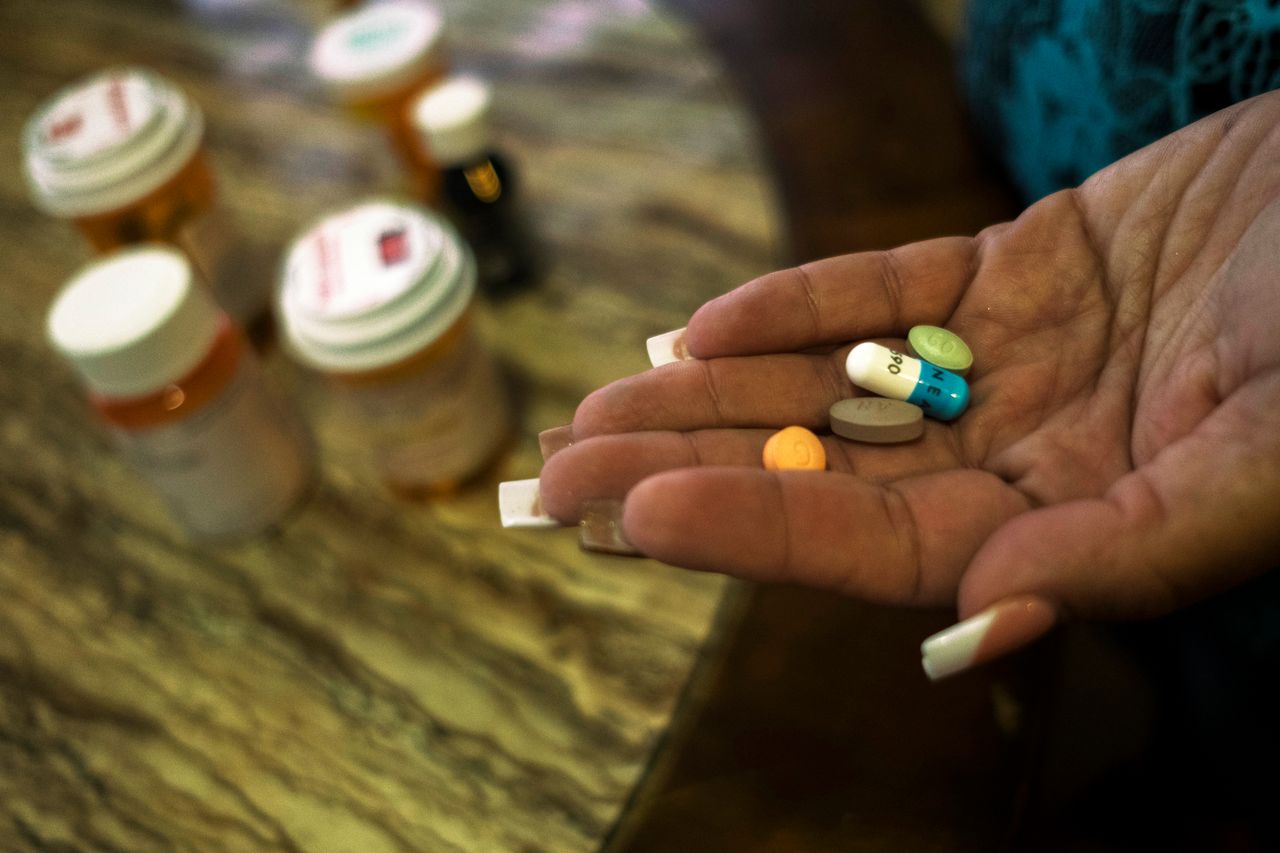
Both Rivera Acosta and Medina de Jesús said the situation has robbed them of a better quality of life. Nephrologists and advocates agree, but there is little the mothers can do, especially since moving to the main island isn’t a viable option for their families.
Medina de Jesús said her husband, who is her primary caretaker, doesn’t want to leave Vieques; Rivera Acosta said it’d be hard for her to find a stable full-time job that would be flexible with her condition, particularly with Puerto Rico’s economic crisis. She’s also afraid Jouseph would be bullied at a new school.
“Bullying in Puerto Rico is terrible, and at least in Vieques, his classmates know him, he isn’t bullied and they treat him very well, they treat him like a normal kid,” she said.
Ayala, who has treated Medina de Jesús and other Vieques patients at the Humacao dialysis center post-Maria, told HuffPost the full days of travel are difficult for all Vieques patients. At one point or another, Ayala said, nearly all of them have had to be transferred to a nearby hospital after treatment because of health complications that prevented them from traveling home.
It’s a precarious situation the nephrologist feels is unacceptable: “Establishing a dialysis unit in an emergency situation like this should not take this much time,” he said.

Private flights are just the latest in a series of stopgap measures intended to facilitate dialysis treatment for patients in Vieques after Hurricane Maria.
In the immediate aftermath of the storm, the Federal Emergency Management Agency flew patients to San Juan by helicopter for treatment. Then nonprofits like ViequesLove and Americares began to pay for charter planes. ViequesLove did not respond to HuffPost’s inquiries, but an account it gave The Atlantic indicates the organization began funding the flights in late October. Americares told HuffPost it funded transportation for dialysis patients in Vieques from late November 2017 through the end of this February.
For a while, with no one to pick up the tab, Vieques patients had to make the trip to the main island by ferry ― a notoriously unreliable, strenuous and crowded form of transportation.
The Renal Council of Puerto Rico, a nonprofit organization that advocates for kidney patients, has been funding the flights since April. Director Ángela Díaz told HuffPost the organization has spent more than $161,000 covering the weekly flights for nine patients in Vieques, the paramedics who travel with them, and daily food. Transportation to and from the airports is either covered by the patients’ medical insurance or with the help of local hospitals.
Medina de Jesús is an exception. Her condition makes it impossible for her to travel by plane with other patients, and Díaz said the Renal Council could not afford to cover her costs. The municipality of Vieques pays for her flights instead but doesn’t cover a paramedic to fly with her.
“I go in a plane alone, with the pilot and my sister. No paramedic,” Medina de Jesús said. “If something happens to me, neither the pilot nor my sister will be able to help me because they don’t know what to do.”
But the Renal Council is very close to running out of money, Díaz said, disrupting even this imperfect arrangement. The organization will only fund the flights until the end of October; then the Department of Health will either have to pick up the tab or get a functioning mobile dialysis unit on the small island.
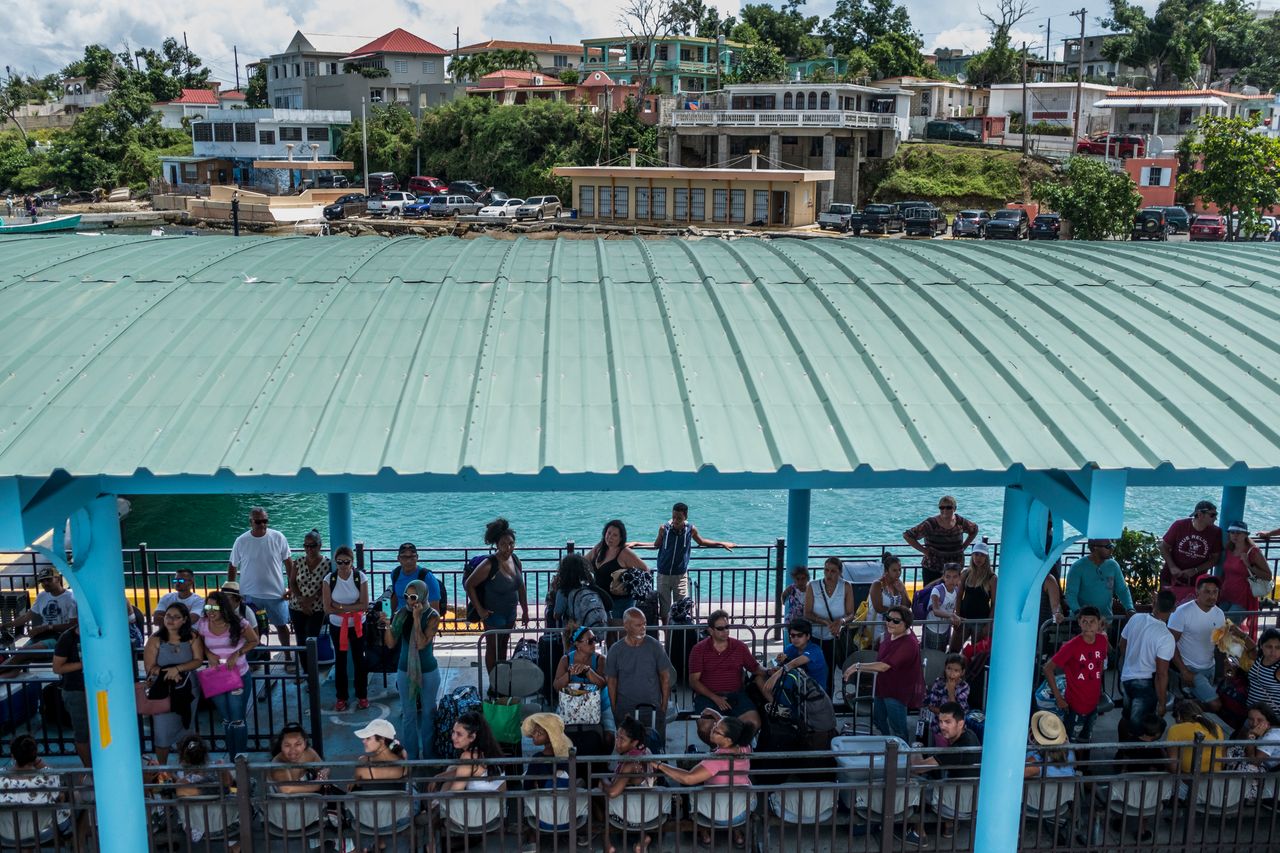
Yolanda Huertas, assistant secretary of medical and nursing services at the Department of Health, told HuffPost that FEMA gave Puerto Rico’s Department of Health $2.9 million to purchase a mobile dialysis clinic for Vieques. FEMA also confirmed via email that it had given the department funds for the unit.
The Department of Health first promised the mobile dialysis clinic would arrive by July. When that didn’t happen, it moved the date to the end of August.
A delay in the arrival of the machinery’s warranty paperwork caused the setback, Huertas told HuffPost.
On Oct. 5, the Department of Health sent letters to Vieques dialysis patients notifying them that the mobile unit had arrived in Vieques and was being prepared for use by personnel from Odulair, a Wyoming-based manufacturer of mobile health clinics. The letter, signed by Puerto Rico Secretary of Health Rafael Rodríguez Mercado, said the mobile dialysis unit would hopefully be ready for use by or before the end of October. As of Tuesday morning, the mobile dialysis is still not up and running on Vieques.
The continuous delays have left Rivera Acosta skeptical about whether a functioning mobile dialysis unit will ever be available on Vieques.
“I feel like they have deceived us, and I have a feeling that they keep stalling and they are actually never going to set up a clinic,” she said, later adding. “I’ll believe it when I see it.”
“I feel like they have deceived us, and I have a feeling that they keep stalling and they are actually never going to set up a clinic.”
- Leyla Rivera Acosta, 45-year-old dialysis patient
Even once the mobile unit begins operating, it would only be another temporary solution for dialysis patients in Vieques. The Renal Council pointed out that Department of Health regulations don’t allow a mobile dialysis unit to be used for more than eight months at a time.
“We need a permanent center with the necessary security measures as well as proper water and power supply,” Ayala said. “A mobile station provides a temporary relief for the situation but it is not something permanent.”
Dr. Rodolfo Troche, a San Juan-based nephrologist who served as medical director for the Vieques dialysis center from its inception in 2008 to 2010, agreed the mobile unit should not be a permanent solution.
“I don’t know how strong it will be or how prepared it is to tolerate the kind of phenomenon that we just experienced,” he said, referencing Hurricane Maria. “If any other weather situation occurs, we will be back to zero.”

And the need for a permanent dialysis center on Vieques will likely only grow over time. Ayala and Troche said Puerto Rico has a high incidence of people with underlying conditions that lead to kidney failure ― including diabetes, hypertension and urinary tract infections.
“If any other weather situation occurs, we will be back to zero.”
- Dr. Rodolfo Troche, San Juan-based nephrologist
To make matters worse, a lack of specialized providers and access to care means patients with these conditions don’t have the tools to effectively manage their chronic conditions and prevent kidney damage.
“Theoretically, the most effective thing to do would be to treat the conditions that cause kidney failure, and that doesn’t seem to be happening,” Ayala said, adding that diabetes is by far the most common condition leading to dialysis in the U.S. territory. But “there are very few endocrinologists available to help with the treatment of diabetes because there are very few endocrinologists in Puerto Rico.”
“We have a shortage of medical professionals,” he added. “Specialists are leaving the island due to the [economic] conditions that we live in here.”

While dialysis patients wait for a more permanent solution, both Ayala and Troche agree that it would be cheaper to build a new dialysis center in Vieques than to keep paying for patients to fly between their home island and the main island for treatment.
“Establishing the dialysis center in Vieques would be more cost-effective than to have to keep traveling,” Troche said. “That was the reason they [built the center in Vieques] 10 years ago. The Department of Health noticed that they were spending a lot of money paying for travel.”
In the meantime, patients in Vieques are desperate for a functioning mobile dialysis unit on their island.
“Some walk and others don’t, but we all get tired,” Medina de Jesús said. “Vieques is a tough little island, and I know we can do this. What happens is that I don’t think they want to fight anymore.”
